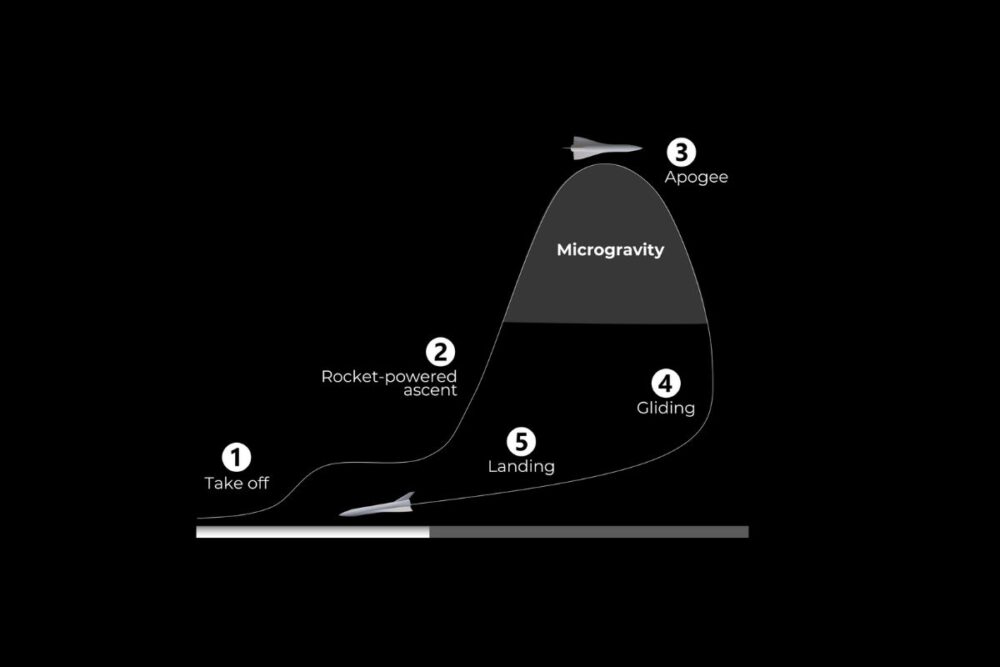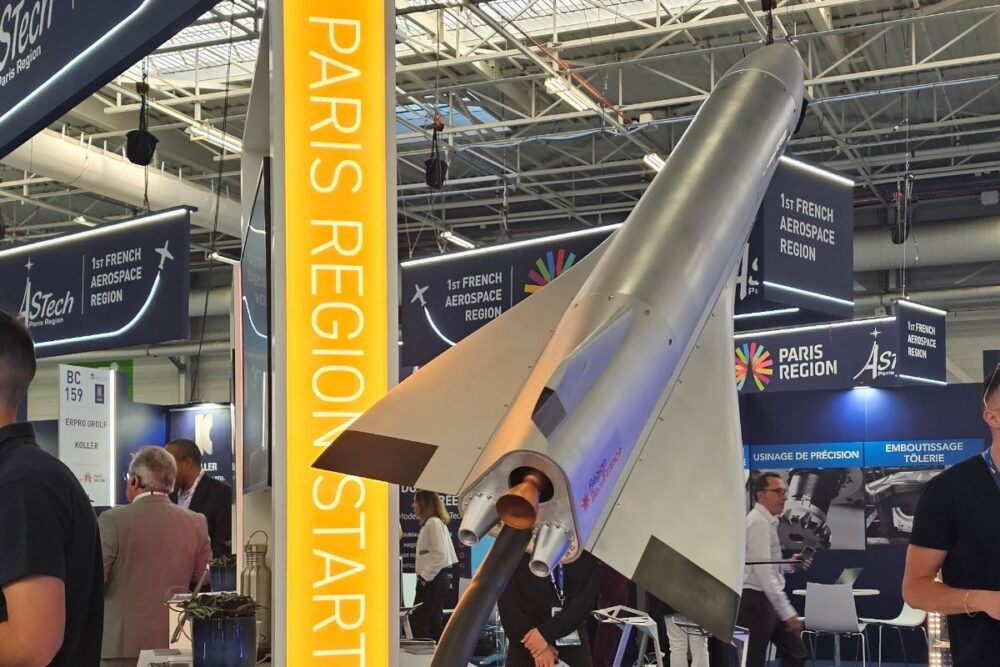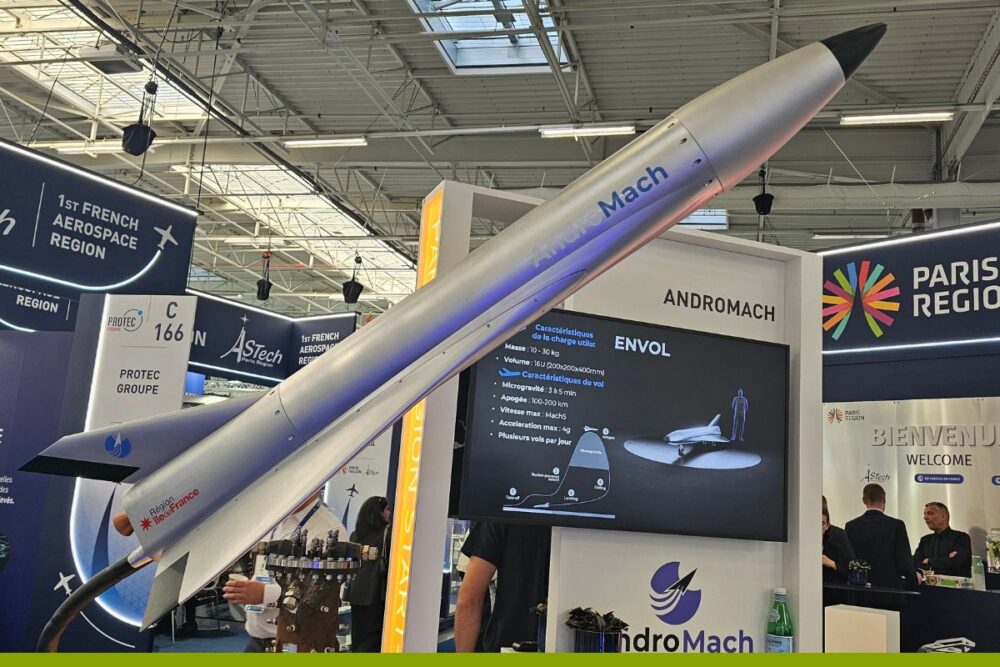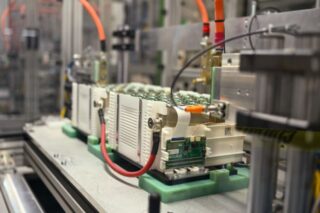Headquartered in Paris, AndroMach is an emerging aerospace startup working on a breakthrough concept: a suborbital vehicle designed to reach space and offer several minutes of microgravity. The goal is to enable technological testing, scientific research, and ultimately lay the groundwork for a reusable mini space shuttle. At the Paris Air Show, we met with Hugo Verjus, co-founder of AndroMach.
A Mini Space Shuttle on a Startup Scale
Created in September 2023, AndroMach aims to develop a small-scale space shuttle capable of transporting 100 kilograms of payload into low Earth orbit and bringing it back to Earth. The vehicle, named Étoile, is meant to address a largely unmet need in space operations: affordable return of payloads from orbit.
“For the past twenty years, we’ve been focused on reducing the cost of getting to space. But returning from space is still extremely expensive,” says Hugo Verjus, co-founder of AndroMach.
Envol: A Suborbital Drone for Tomorrow’s Technologies
Before launching Étoile, AndroMach is developing Envol, an uncrewed suborbital aircraft capable of generating several minutes of microgravity. Powered first by two turbojet engines and then by a rocket engine, the drone takes off from a conventional runway like any aircraft before sharply ascending vertically into space.
After the rocket engine shuts down, the drone enters a ballistic trajectory free of aerodynamic drag, producing about five minutes of microgravity. This opens the door to several emerging markets such as microgravity scientific research and in-orbit technology validation, including sensors, satellite subsystems, and embedded electronics. It also enables cost-effective experimentation, thanks to the system’s reusability.
“We can conduct repeated flights, run testing campaigns at a fraction of the cost, and without the need for heavy infrastructure. All we need is a runway,” explains Verjus.
The drone also reaches hypersonic speeds, adding to its potential for advanced scientific applications.

Innovative In-House Propulsion
At the heart of the project is a hybrid propulsion system developed internally by the founding team. The rocket engine—central to the vehicle’s design—will undergo its first ignition tests in summer 2025. Andromach has filed a patent for an adaptive nozzle that boosts engine efficiency.
The company is already supported by CNES (the French space agency), which co-funds part of the propulsion development under a dedicated contract. Andromach also aims to join ESA programs and form European industrial partnerships.
All components of Envol are intentionally sourced from France or at least Europe. This is both to ensure strategic sovereignty and to avoid export regulation issues such as ITAR.
“We have all the necessary expertise here in Europe to build this kind of system,” says Verjus. “We’re not reinventing the wheel—we’re assembling proven technologies to create something that doesn’t exist anywhere else.”
According to him, no commercial equivalent of this drone exists—not in the U.S., not in China. While the U.S. military is experimenting with some demonstrators, nothing on the market is comparable.
READ ALSO
What Comes Next? A Mini Reusable Orbital Shuttle
Envol is only the first step. Once proven, the concept could scale into larger versions—possibly crewed—and eventually enable point-to-point transport across Earth. In parallel, Étoile, the reusable orbital shuttle, remains the ultimate goal. This vehicle would be capable of retrieving instruments or materials from orbit. It could also unlock new markets such as in-space manufacturing, satellite maintenance and retrieval, or orbital logistics.
The rocket engine is set to fire for the first time in summer 2025. The first Envol flight is scheduled for around mid-2026. The exact launch site has yet to be confirmed. But the advantage of this drone is that it can take off from a simple airport runway, unlike European space shuttles which usually require a launch from French Guiana.
Technical Summary – Envol
Type: Uncrewed suborbital drone
Propulsion: 2 turbojet engines + 1 rocket engine
Mission: ~5 minutes of microgravity, real-world tech testing
Recovery: Fully reusable
Applications: Scientific research, technology demonstrations, orbital micro-production
Origin: 100% designed and built in Europe








![Image [Buying Guide] How to Choose the Right Protection Gloves?](/wp-content/uploads/sites/3/Gloves-1-320x213.jpg)


